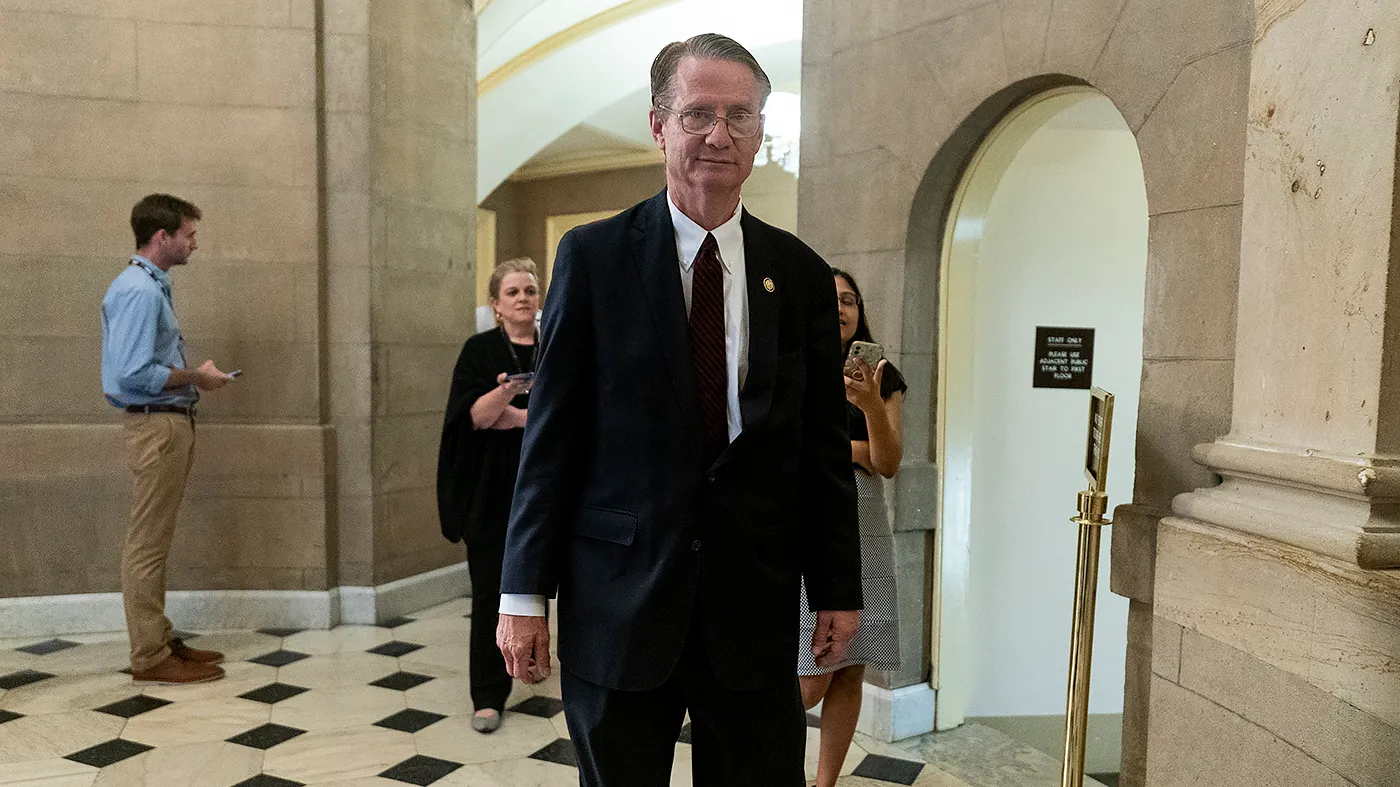Trump Imposes Sweeping 30% Tariffs on EU and Mexico, Starting August 1
Trump Imposes Sweeping 30% Tariffs on EU and Mexico, Starting August 1
By
Calder Monroe
Last updated:
July 14, 2025
First Published:
August 3, 2025
.jpeg)
Photo: Daily Herald
Trump Unleashes New Wave of Tariffs Targeting Key U.S. Trade Partners
In a major escalation of his protectionist trade policy, President Donald Trump announced that the United States will impose a 30% tariff on all goods imported from the European Union and Mexico, effective August 1. The move, revealed through official letters to European Commission President Ursula von der Leyen and Mexican President Claudia Sheinbaum — and posted publicly on Trump's Truth Social platform — has reignited fears of a global trade war.
Trump warned that any retaliatory tariffs from the EU or Mexico would be met with additional hikes, stating:
“Whatever the number you choose to raise them by, will be added on to the 30% that we charge.”
The new tariffs apply across-the-board, and follow similar warnings issued this week to 23 other U.S. trading partners, including Canada, Japan, and Brazil, with tariffs ranging from 20% to 50%. The announcement marks a bold step in Trump's efforts to push what he calls a "reciprocal" trade landscape.
Global Trade at Stake: EU and Mexico Account for One-Third of U.S. Imports
The European Union and Mexico are among the U.S.’s most critical trading partners. According to the Office of the U.S. Trade Representative, the U.S. imported over $553 billion in goods from the EU in 2022 — more than from any single country. Imports from Mexico totaled approximately $454.8 billion during the same year.
Together, these two partners account for roughly one-third of all U.S. goods imports, underscoring the magnitude of Trump's new tariffs and their potential ripple effects across global markets and supply chains.
Reactions from Brussels and Mexico City: Condemnation and Warnings
European Commission President Ursula von der Leyen responded firmly, calling the tariffs a threat to both economies:
“Imposing 30 percent tariffs on EU exports would disrupt essential transatlantic supply chains, to the detriment of businesses, consumers and patients on both sides of the Atlantic.”
Von der Leyen reiterated the EU’s commitment to continued dialogue before the August 1 deadline but made clear that the bloc is prepared to implement “proportionate countermeasures” if necessary.
The Mexican government also pushed back. In a statement released Saturday, officials confirmed that they were informed of the tariffs during a meeting with U.S. trade representatives on Friday.
“We stated at the meeting that this was unfair treatment and that we disagreed,” the statement read.
“It is very significant that starting July 11, we established the necessary pathway and forum to resolve any possibility of new tariffs taking effect on August 1.”
Broader Tariff Strategy: Global Impact and Negotiation Tactics
Trump’s latest move continues his aggressive strategy of using sweeping tariff threats as leverage in trade talks. On April 2, he stunned markets with a global 10% blanket tariff on imports and steeper duties on products from nearly 60 countries — dubbed “Liberation Day” by the administration. The announcement triggered sharp market losses and warnings from business groups.
A week later, the administration hit pause on most of the increases for 90 days, citing the potential for new trade deals. But by the pause's expiration, only two preliminary agreements had been reached — with the United Kingdom and Vietnam.
On Monday, Trump extended the tariff pause to August 1, setting the stage for this new round of threats to become reality. All of the tariff rates announced in recent letters will now take effect on that date.
In an interview with NBC News on Thursday, Trump made clear his intention to expand the policy even further:
“We’re just going to say all of the remaining countries are going to pay, whether it’s 20% or 15%. We’ll work that out now.”
Officials Tout UK Deal, Urge Others to Negotiate Quickly
Treasury Secretary Scott Bessent praised the UK for acting swiftly to secure a preliminary deal:
“Let this be a lesson to other countries — earnest, good faith negotiations can produce powerful results that benefit both sides of the table.”
The U.K. agreement includes a blanket 10% levy on all British goods imported into the U.S. It remains unclear whether similar terms will be extended to other nations.
What’s Next: Tensions Rise Ahead of August 1 Deadline
With just weeks remaining before the new tariffs take effect, global leaders are scrambling to respond. The European Union is expected to present a final package of countermeasures if no deal is reached, while Mexico seeks to defuse tensions through a new bilateral working group.
Market analysts warn that such broad tariffs could disrupt supply chains, raise prices for American consumers, and damage global economic stability. According to the Peterson Institute for International Economics, a 30% tariff on EU goods could cost the U.S. economy $75 billion annually if sustained.
Businesses, trade groups, and foreign governments now face a critical decision: meet Trump at the negotiating table — or prepare for the largest trade conflict since the 1930s.
As the August 1 deadline looms, all eyes remain on Washington — and whether diplomacy can prevail over tariffs.
Popular articles
Subscribe to unlock premium content
Bolivia How Lithium Mining Policies Are Positioning It as the Next Global EV Battery Hub

Naval Ravikant The Angel Investments That Quietly Made Him a Multimillionaire

Rising From the Rubble Lessons From Billionaires Who Failed 10 Times Before Success

Bolivia How Lithium Mining Policies Are Positioning It as the Next Global EV Battery Hub

Naval Ravikant The Angel Investments That Quietly Made Him a Multimillionaire

Bolivia How Lithium Mining Policies Are Positioning It as the Next Global EV Battery Hub









